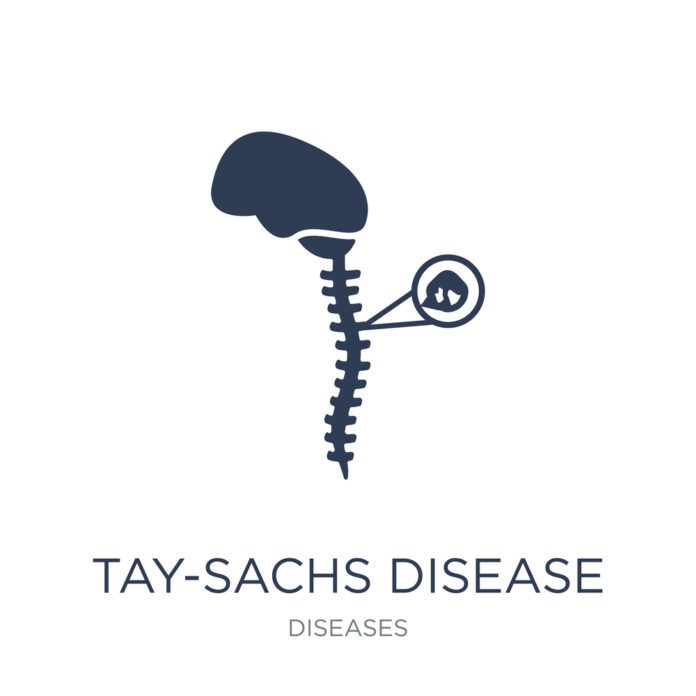Overview Of Lysosomal Storage Disease – Tay-Sachs Disease
Lysosomal Storage Disease – Tay-Sachs Disease is a life-threatening disease of the nervous system passed down through families
Commonly Associated With
GM2 gangliosidosis – Tay-Sachs; Lysosomal storage disease – Tay-Sachs disease
Causes Of Lysosomal Storage Disease – Tay-Sachs Disease
Tay-Sachs disease occurs when the body lacks hexosaminidase A. This is a protein that helps break down a group of chemicals found in nerve tissue called gangliosides. Without this protein, gangliosides, particularly ganglioside GM2, build up in cells, often nerve cells in the brain.
Tay-Sachs disease is caused by a defective gene on chromosome 15. When both parents carry the defective Tay-Sachs gene, a child has a 25% chance of developing the disease. The child must receive two copies of the defective gene, one from each parent, in order to become sick. If only one parent passes the defective gene to the child, the child is called a carrier. They will not be sick, but may pass the disease to their own children.
Anyone can be a carrier of Tay-Sachs. But, the disease is most common among the Ashkenazi Jewish population. One in every 27 members of the population carries the Tay-Sachs gene.
Tay-Sachs is divided into infantile, juvenile, and adult forms, depending on the symptoms and when they first appear. Most people with Tay-Sachs have the infantile form. In this form, the nerve damage usually begins while the baby is still in the womb. Symptoms usually appear when the child is 3 to 6 months old. The disease tends to get worse very quickly, and the child usually dies by age 4 or 5.
Late-onset Tay-Sachs disease, which affects adults, is very rare.
Symptoms Of Lysosomal Storage Disease – Tay-Sachs Disease
Symptoms may include any of the following:
- Deafness
- Decreased eye contact, blindness
- Decreased muscle tone (loss of muscle strength), loss of motor skills, paralysis
- Slow growth and delayed mental and social skills
- Dementia (loss of brain function)
- Increased startle reaction
- Irritability
- Listlessness
- Seizures
Exams & Tests
The health care provider will examine the baby and ask about your family history.
Tests that may be done are:
- Enzyme exam of blood or body tissue for hexosaminidase levels
- Eye exam (reveals a cherry-red spot in the macula)
Treatment Of Lysosomal Storage Disease – Tay-Sachs Disease
There is no treatment for Tay-Sachs disease itself, only ways to make the person more comfortable.



